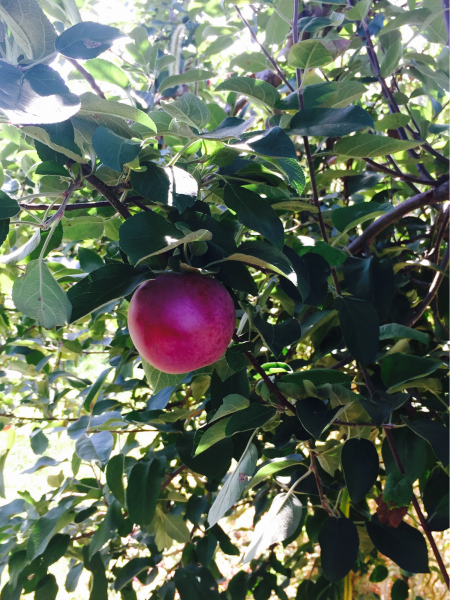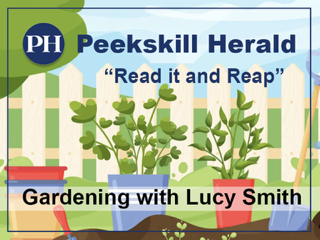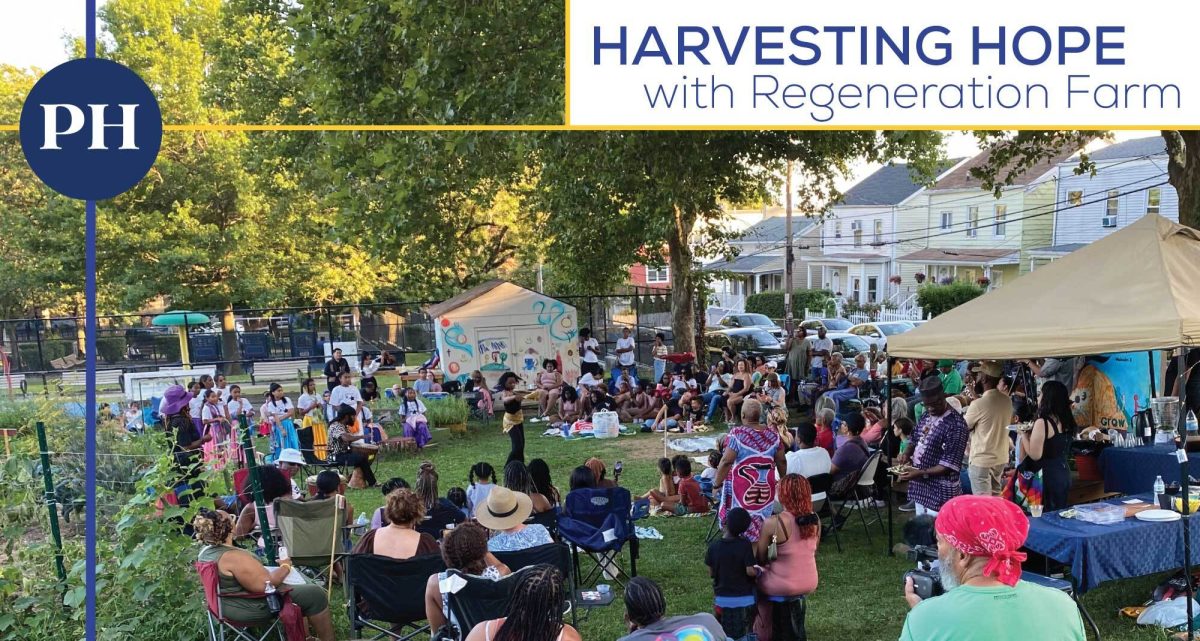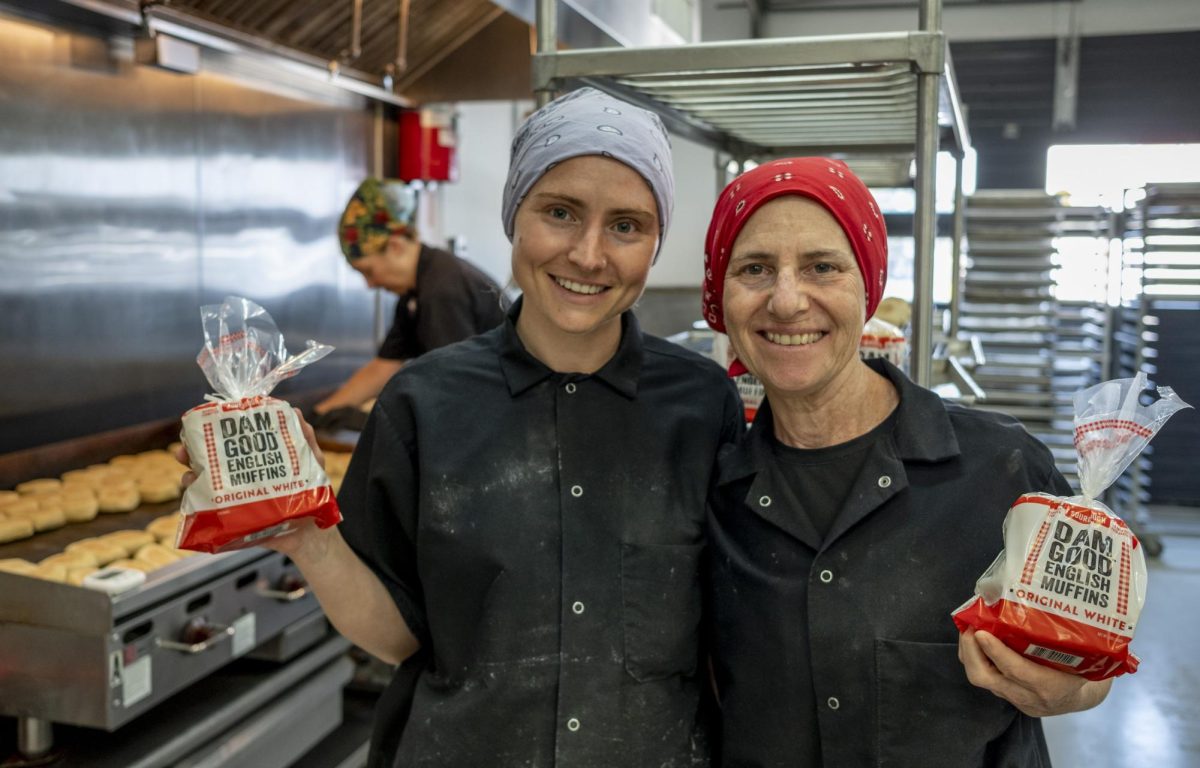Everyone in my family knows of my love of the Macoun apple. Possessed of green-red, almost purple skin, its crisp, white flesh tastes faintly spicy and maintains a perfect balance between tart and sweet. Once picked, you have less than two weeks until its zingy crunch gives way to a still-delicious but decidedly mealy bite, which is why they’re better eaten in an orchard. This is also the reason why we planted a Macoun apple tree in our yard five years ago.

The Macoun is one of the over 7,500 cultivars of the eating apple, or Malus domesticus. M. domesticus has traveled a long way from its original appearance, both geographically and morphologically. Scientists believe these fruits were first cultivated in Central Asia, and found their way to North America in the 1600s when they were planted by English settlers. The native crabapple, Malus coronaria or M. angustifolia, is useful to pollinators as a native shrub but is now more commonly appreciated as an ornamental, with fruit considered by most to be too tart for use outside of jellies.
Another use of crabapples is as rootstock for growing proven cultivars such as the Macoun. To eliminate the variability of apples produced sexually (that is, with the genetic material of two other types of apples), cultivators ensure the growth of a particular variety by grafting, taking advantage of the apple’s ability to reproduce via clones in the form of enthusiastic new branches. Fruit tree nurseries take scions of proven trees and intercut them with the rootstock of a cultivar with favorable characteristics, such as a compact growing habit or disease-resistance. This is how orchards and nurseries are able to keep selling true varieties of apples, while researchers are able to search out new hybrids grown from seed.
Choosing and Caring for Your Own Apples
As the old adage goes, the best time to plant a tree is thirty years ago, and the second best time is right now. In this case, waiting until spring gives your apple tree a better chance to establish a strong root system and minimize damage from freezes and storms. For bare root plants (those saplings that are sold at a lower price point but without the mediating protection of established roots), get seedlings in the ground in March; for potted plants, wait until May or June. Popular varieties to plant in our area include the aforementioned Macoun, Cortland, MacIntosh, Gala, Pink Lady, Rome, Jonagold, and Ida Red. Choosing a variety to grow depends on how much space you have as much as what apple flavor tickles your fancy–acquaint yourself with these offerings at local orchards!
Most varieties are available in dwarf or standard sizes, with standard types boasting greater yields but requiring more space and care. Another important factor to consider is that apple trees will not fruit unless there are two or more different varieties within pollinating radius, so plan on buying two different cultivars or scouting the availability of existing apples within a half-mile or so. (Crabapples are also fair game as a second pollinizer!) Be sure that the space where you’ll plant your apple seedlings receives at least 8 hours of sunlight during the growing season, with no standing water and an optimal soil acidity (pH of 6 to 7).
Once you’ve chosen your apple tree(s!), prepare the area for planting by digging out a hole for the root ball at least twice as large as its diameter and one-and-a-half times the root ball’s depth. Amend up to a third of the soil to be replaced post-planting with compost or well-rotted manure. Water immediately before and after planting, and mulch up to a few inches deep, pulling any plant material away from where the root stock meets the mulch to prevent rot. If planting multiple trees next to each other, ensure that there’s as much space between them horizontally as the anticipated height of the full-grown tree. It’s ideal to stake apple trees for the first few years of their lives, as well, being sure that all attached materials are softer than the bark to prevent injury.
Where you may be pressed for space, consider the espalier method which trains tree branches along a frame. Espaliering is achieved by planting the tree between two posts which have wire running at regular intervals horizontally. As the tree grows, branches are pinned along the wire with string so that fruit grows evenly spaced and within reach, and the top of the tree is trimmed to push growing energy back into the rest of the plant.

Other Growing Concerns
As your apple tree matures, you’ll need to prune in early spring and nourish with a high quality organic fertilizer or compost in May or June. Apples can be underplanted with herbs such as chives or hyssop to deter pests and act as a living mulch. Keep an eye on new leaves and buds as summer approaches for insect damage or disease. Remove smaller fruit, keep well-watered (apples like at least one inch a week), and consider deterring prospective nibblers like deer with heavily-scented soap such as Irish Spring hung at nose-level in an upcycled sock. If all else fails, fence in your apple trees and call it your very own tiny orchard.
We still haven’t had the delight of getting any apples from our own trees, and by now, even the Macouns I find in the bins from local orchards have lost their elusive crunch. I will content my palate with grocery store shadows, lacking either snap or flavor, until I thrill to the first juicy bite of next fall’s apples.
























